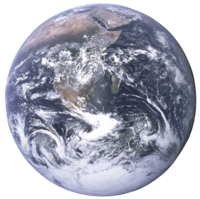
Photo from wikipedia
Abstract The growing human population concentrated in urban areas lead to the increase of road traffic and artificial areas, consequently enhancing air pollution and urban heat island effects, among others.… Click to show full abstract
Abstract The growing human population concentrated in urban areas lead to the increase of road traffic and artificial areas, consequently enhancing air pollution and urban heat island effects, among others. These environmental changes affect citizen's health, causing a high number of premature deaths, with considerable social and economic costs. Nature‐based solutions are essential to ameliorate those impacts in urban areas. While the mere presence of urban green spaces is pointed as an overarching solution, the relative importance of specific vegetation structure, composition and management to improve the ecosystem services of air purification and climate regulation are overlooked. This avoids the establishment of optimized planning and management procedures for urban green spaces with high spatial resolution and detail. Our aim was to understand the relative contribution of vegetation structure, composition and management for the provision of ecosystem services of air purification and climate regulation in urban green spaces, in particular the case of urban parks. This work was done in a large urban park with different types of vegetation surrounded by urban areas. As indicators of microclimatic effects and of air pollution levels we selected different metrics: lichen diversity and pollutants accumulation in lichens. Among lichen diversity, functional traits related to nutrient and water requirements were used as surrogates of the capacity of vegetation to filter air pollution and to regulate climate, and provide air purification and climate regulation ecosystem services, respectively. This was also obtained with very high spatial resolution which allows detailed spatial planning for optimization of ecosystem services. We found that vegetation type characterized by a more complex structure (trees, shrubs and herbaceous layers) and by the absence of management (pruning, irrigation and fertilization) had a higher capacity to provide the ecosystems services of air purification and climate regulation. By contrast, lawns, which have a less complex structure and are highly managed, were associated to a lower capacity to provide these services. Tree plantations showed an intermediate effect between the other two types of vegetation. Thus, vegetation structure, composition and management are important to optimize green spaces capacity to purify air and regulate climate. Taking this into account green spaces can be managed at high spatial resolutions to optimize these ecosystem services in urban areas and contribute to improve human well‐being. Graphical abstract Figure. No Caption available. HighlightsAir purification and climate regulation were quantified in an urban green space.Different vegetation types shown different capacities to provide these services.Original woodland presented the higher ecosystem services provision.Vegetation structure, composition and management matter to services provision.Nature‐based solutions in urban areas can optimize local climate and air quality.
Journal Title: Environmental Research
Year Published: 2018
Link to full text (if available)
Share on Social Media: Sign Up to like & get
recommendations!